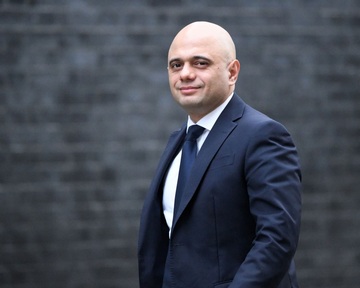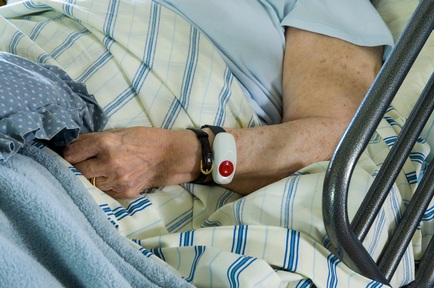NHS trusts must make 'radical changes' to reduce financial deficit
NHS foundation trusts (FTs) have accrued a financial deficit of nearly £1 billion within the first three months of the new financial year, described by regulators as being the worst financial position in a generation.

Foundation trusts provide a wide range of care services to patients to protect their health and well-being.
During its analysis, the regulator, Monitor, revealed a deficit of £445 million, £90 million worse than anticipated. Monitor found 78 per cent (118) FTs ended the analysis period in deficit, 75 per cent of those were acute or specialist trusts.
The results highlight that for the second successive financial year, trusts have recorded a deficit of –£445 million, in the first financial quarter with trusts citing higher than expected pay costs and relying on expensive agency staff as the primary reason for the deficit.
Monitor, has warned that trusts need to improve how they operate by making radical changes to how care is currently being delivered in order to deal with the intense pressure they’re faced with as the demand for care increases.
’Radical and lasting change is required’
Chief executive at Monitor, Dr David Bennett, said: “Trusts are working hard to provide patients with quality care. However, today’s figures reiterate that the sector is under massive pressure and must change to counter it.
“The NHS simply can no longer afford operationally and financially to operate in the way it has been and must act now to deliver the substantial efficiency gains required to ensure patients get the services they need.
“Monitor has already taken action to help the sector improve operationally and financially and continue to offer our support and guidance. But the FT sector must realise that a radical and lasting change is required.”
Monitor analysed the performance of FTs between April 2015 and June 2015 and discovered that 151 (the majority of NHS providers) missed waiting time targets – including those for A&E, targets for routine operations and targets for some cancer treatments. Foundation trusts were also revealed to be struggling to deal with an increase in demand for diagnostic tests, due to staff shortages and ineffectively organised services.
Commenting on the results, Richard Murray, director of Policy at The King’s Fund said: “These figures confirm that NHS providers are heading towards an unprecedented end of year deficit.
“The reported overspend of £930 million at the end of the first quarter is more than the deficit for the whole of last year. This reflects a very sharp deterioration in financial performance among all types of providers, with 96 per cent of acute trusts and more than half of mental health trusts now reporting deficits.
“On this basis, warnings of a deficit of at least £2 billion by the end of the year are well-founded. The Government and NHS bodies are already taking urgent measures to reduce spending and find savings from other budgets, but it is inconceivable that an overspend of this magnitude can be covered by the end of the year.
“Overspending on this scale cannot be attributed to mismanagement or waste among individual trusts. It reflects the impossible task of delivering high quality care for patients with inadequate funding.
’A rapid and serious decline in patient care is inevitable’
“Today’s figures follow data released yesterday showing that A&E departments missed the four hour waiting time target during August and that waiting times for hospital treatment are close to breaching the Government’s preferred target measure.
“With winter approaching, the NHS is facing widespread deficits, rising waiting times and deteriorating staff morale. The Government must now acknowledge it cannot continue to maintain standards of care and balance the books. Unless emergency funding is announced in the forthcoming Spending Review, a rapid and serious decline in patient care is inevitable.”
The FT sectors wage bill was £7,411 million, £59 million more than planned, while trusts made £232 million worth of cost savings, though this was £64 million less than anticipated.
Overall, the sector missed A&E waiting time targets, with 95 per cent of patients being seen within four hours. Of those visiting A&E during the period, 29,000 people waited on a trolley for more than four hours between the decision to admit them to A&E and their arrival on a ward due to reduced bed availability.
During the same period, the number of people on the list of routine operations reached 1.9 million, an increase of 169,100 during the same period for 2014-15. While 10,800 patients waited longer than the recommend six weeks for diagnostics tests.
Furthermore, FTs treated 93.1 per cent of non-emergency patients within 18 weeks, compared to the 92 per cent requirement.
In addition, ambulance services were identified as meeting national waiting times for responding to critical and life threatening incidents between April and June 2015.
As a result of its findings, Monitor, intervened or agreed regulator action for 25 per cent of trusts (37) due to operational or financial concerns.
The report covered the period before action was taken to limit the amount spent by trusts on agency staff and management consultants.
In July 2015, Monitor launched a series of new initiatives aimed at improve the quality of care provided by NHS foundation trusts, the access and availability of services and increasing their productivity.
Latest News Analysis
 04-Sep-19
Extra £1.5 billion announced for social care in Chancellor's Spending Review
04-Sep-19
Extra £1.5 billion announced for social care in Chancellor's Spending Review
 02-Jul-19
Department of Health forced to rethink care homes' nursing rates after legal challenge
02-Jul-19
Department of Health forced to rethink care homes' nursing rates after legal challenge
 18-Jun-19
Overnight care workers forced to sleep in offices and told 'bring your own bedding'
18-Jun-19
Overnight care workers forced to sleep in offices and told 'bring your own bedding'
 14-Jun-19
Back in the closet: Third of care home staff have had no LGBT+ awareness training
14-Jun-19
Back in the closet: Third of care home staff have had no LGBT+ awareness training
 11-Jun-19
PM candidates on social care: Rory Stewart calls fixing care an 'unfinished revolution'
11-Jun-19
PM candidates on social care: Rory Stewart calls fixing care an 'unfinished revolution'